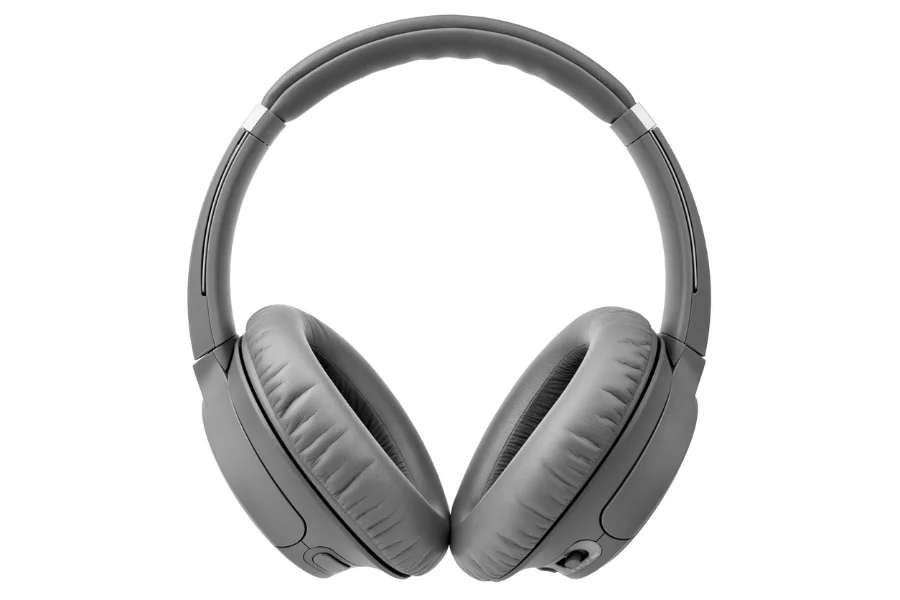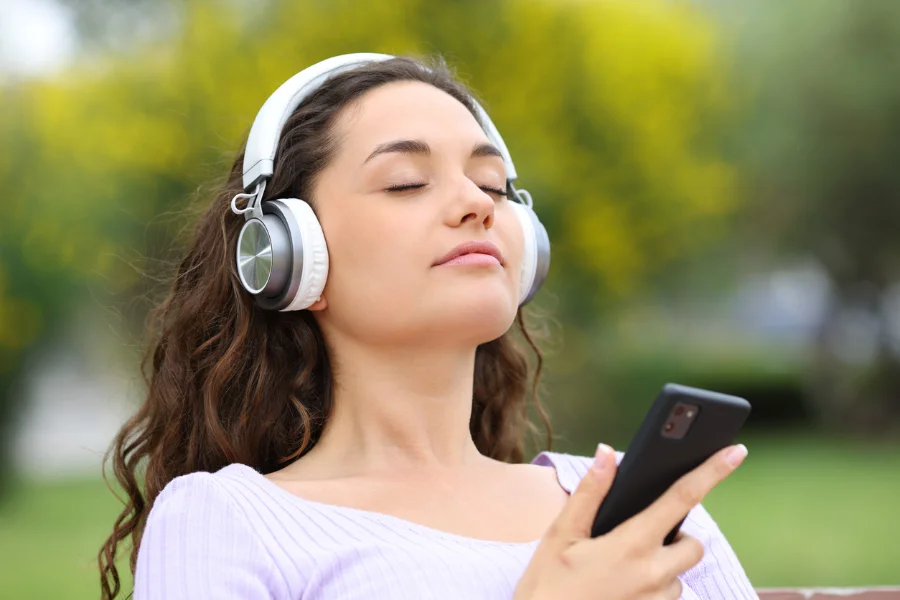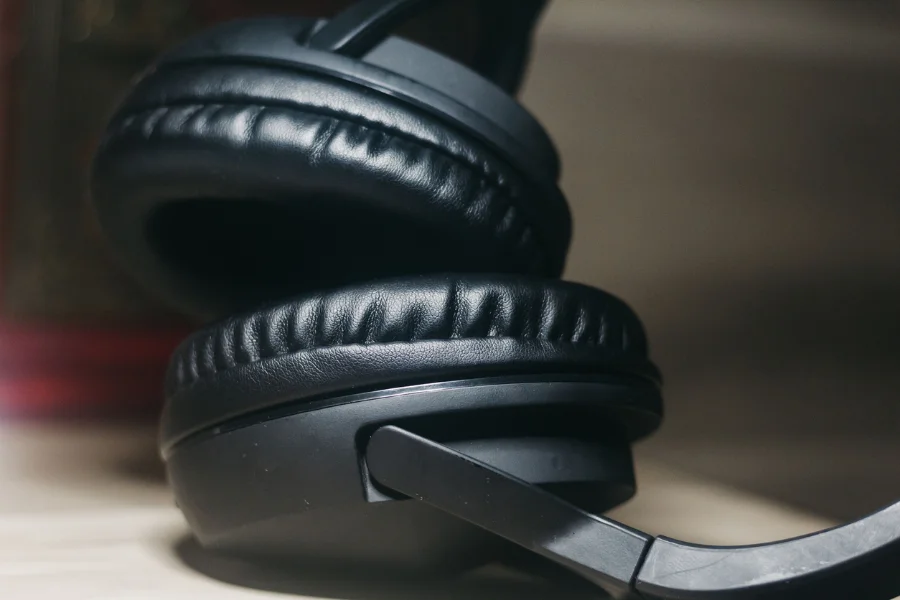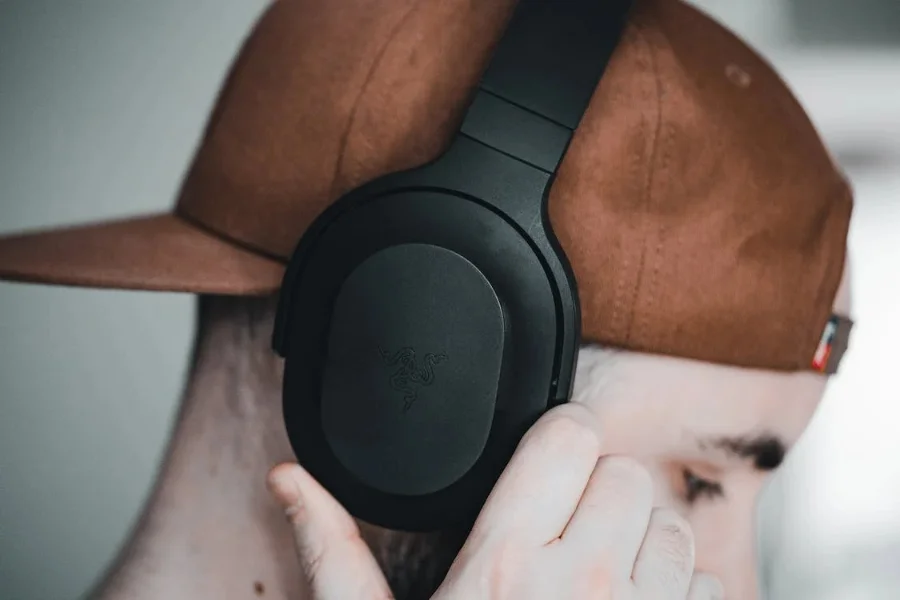Since the invention of noise-canceling headphones, these gadgets have come in handy, especially when working and traveling. Listening to music while at work has proven to increase productivity by 78.4%, according to a study by Cloud Cover Media. Additionally, Laura Hernandez, Sirius XM’s head of travel and tourism marketing, revealed that 77% of their customers listen to music and podcasts when traveling.
With headphones being popular globally, noise-canceling headphones are helpful in areas like noisy airports, busy subways, or workplaces. However, consumers looking for these gadgets may have difficulty sourcing the best for their needs, as several brands have different qualities. On top of this, many models come in different shapes and with certain features that can confuse a first-time buyer.
That said, choosing noise-canceling headphones should not be a challenging task. In this article, we’ll look at some of the key tips to consider to help sellers find the right option of noise-canceling headphones for their buyers’ needs.
Table of Contents
Overview of noise-canceling headphones
What is ANC technology?
6 selection tips for noise-canceling headphones
Conclusion
Overview of noise-canceling headphones
Market size
Global sales of noise-canceling headphones grossed US$ 5.2 billion in 2022 and the market is expected to reach a record high of US$ 9.06 billion in 2032. During the 2022 to 2032 forecast period, the market will expand at a compound annual growth rate (CAGR) of 5.7%.
Market drivers
An increase in the use of wireless headphones by most consumers contributes to the huge growth of noise-canceling headphones. Another contributor to the growth of the noise-canceling headphones market size is the seamless integration of these headphones.
As the worldwide demand for noise-canceling headphones and earphones increases, businesses can utilize this opportunity and find quality products that meet customer demands. This will entail considering the tips we will be looking at in this guide.
What is ANC technology?
Active noise cancellation (ANC) is an advanced audio technology found in noise-canceling headphones and earbuds, which produces anti-noise signals to eliminate sounds not trapped by the huge ear cups.
Types of noise cancellation
There are three types of noise-reduction headphones:
- Passive noise-canceling headphones.
- Active noise-canceling headphones.
- Adaptive noise-canceling headphones.
Passive noise cancellation

These are the most popular kind of headphones one can find in the market. They feature a unique headphone design with huge padding to protect the ears from external noise.
Pros
- They are best for blocking irregular and high-frequency sounds, such as airplane engine noise.
- They are also effective in eliminating ambient noise in the workplace.
Cons
- They are large and bulky on the head.
- These do not have any internal ANC technology and just use over-ear cups to reduce noise
Active noise cancellation (ANC) headphones
The headphones are designed to eliminate outside noise using their shape but incorporate advanced technology to block noise actively. The headphones use an inbuilt audio processor for detecting and interpreting patterns of incoming sound. They then cancel noise completely by creating an anti-noise signal. The ambient noise is completely filtered, resulting in crisp and pure audio.
Pros
- Can mute both low-frequency sounds and white noise excellently.
- They provide ultimate peace and quietness when commuting
- Upon running out of battery life, they can continue functioning like other headphones.
Cons
- The headphones require a battery to use the active noise-canceling feature.
- Bulkier than other types of headphones because of the additional battery weight.
- They are more expensive than regular headphones.
Adaptive noise-canceling headphones
Adaptive noise cancellation are the newest type of noise-canceling headphones, but they still utilize the active noise canceling feature. The difference from the ANC headphones is the ability to adjust noise depending on the surrounding. If it is loud outside, they can strengthen the noise canceling capability while they can be tuned down when the ambiance is subtle.
Pros
- Some headphone models are advanced and have an automatic noise-canceling capability.
- Adaptive noise cancellation is efficient for consumers who want to accommodate some background noise. This can include flight announcements when landing or taking off or pleas from workmates in a noisy work environment.
Cons
- The more aggressive the noise canceling, the poorer the sound quality. This may happen, especially when the noise outside is loud.
- ANC is sometimes inconsistent in noise attenuation.
6 selection tips for noise-canceling headphones
Headphone type: over-ear vs. on-ear
Headphones are of different types and it is crucial to consider this factor before buying noise-canceling headphones. Over-ear and on-ear headphones are two types of headphones available in the market today.
- Over-ear headphones – These headphones have huge cups that completely cover the ears.
- On-ear headphones – These headphones have smaller cups that rest on the ears.

Each of these headphones has its advantages and disadvantages. The biggest difference is evident when it comes to noise isolation. When it comes to noise-canceling properties, over-ear headphones have more capability.
Since they encompass the ears, they block background sound from the ears without the need for ANC technology. However, it is important that they will still not be as effective as headphones with ANC, which cancels noise. On-ear headphones tend to be dependent on active noise canceling to filter ambient sounds.
Another property to compare the two headphone styles is comfort. Over-ear wins over on-ear headphones since they have more padding and place less stress on the head and ears. This leads to a better listening experience for consumers without pressuring the ears.
Good quality sound
The audio quality is essential to consider for buyers picking reliable noise-canceling headphones. The quality of sound is dependent on the headphone specification. For instance, active noise-canceling headphones typically have better sound quality than passive ones. This is because the ANC technology in the headphones filters ambient sounds better than the large ear cups.

The brand will also help buyers identify headphones with good quality headphones. Reputable brands like Sony, Bose, Apple, and Bowers & Wilkins manufacture some of the world’s best noise-canceling headphones. They include:
- Apple AirPods Max
- Apple AirPods Pro
- Sony WH-1000XM4
- Sony WH-1000XM3
- Bose QuietComfort 45
- Bose QuietComfort 35 II
- Bowers & Wilkins PX
- Bowers & Wilkins PX7
Effective noise canceling
Before buying noise-canceling headphones, one should check how effectively they reduce background sounds. To know whether a headphone is efficient in noise attenuation, the decibel range should guide buyers.
Over-ear headphones should be able to eliminate at least 15 decibels of loudness in a sound frequency range between 20Hz and 1000Hz. For on-ear headphones, they should be able to reduce the noise by 10 decibels in the same sound frequency range.
Accurate and natural transparency mode

Ambiance or transparency mode is a feature that allows headphone users to listen to the outside noise without having to remove the headphones. Some headphones may have an inaccurate and fatiguing ambiance feature and consumers may want to avoid buying them.
This is because they are highly likely to falsely misrepresent what is happening in the outside world. Therefore, it can be a sign that the noise cancellation feature is performing poorly. If the microphone recording outside sounds are ineffective, it also shows the inefficiency of its noise-canceling capability.
Sellers should therefore source headphones with a clear and transparent simulation of the external surroundings. The Bose QuietComfort is an example of a pair of headphones with a superb “Transparency” mode. It is a terrific over-ear ANC headphone that can reduce ambient noise up to 25 decibels, above the headphone industry’s average attenuation level.
Consider checking battery life
As we have seen earlier, ANC headphones have a battery that powers the internal system to reduce noise when activated. Most over-ear models have impressive battery power longevity, with others lasting 30 to 40 hours. Sony WH-1000 XM3 and Bowers & Wilkins PX7 are some good examples.
When the ANC feature is on, the battery tends to deplete faster by 30 to 50%. The slower the rate, the better the headphone. Consumers should choose noise-reduction headphones that can last a long period.
If the headphone has poor battery performance, it should have a feature that allows ANC to be turned off to save on power. Additionally, sellers should provide their customers with models with replaceable batteries to last a lifetime.
Connectivity options
The type of connectivity is another factor to consider when choosing noise-canceling headphones. These headphones allow many connectivity options, including wireless and wired connections. Some models have only one type of connection, while others have both.
Buyers should opt for both connectivity options to enjoy the best of both worlds. Rechargeable wireless headphones also often allow an auxiliary option without compromising on the quality of sound. Moreover, bluetooth headphones are also a good consideration due to their versatility.
Conclusion
This guide has discussed everything there is to know about noise-canceling headphones. Sellers can use these tips to find the right headphones that meet the needs of their buyers. From the sound quality and connection options to battery life, there are a variety of factors sellers should keep in mind when helping their customers find the best noise-canceling headphones for work and travel.




